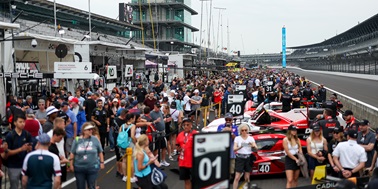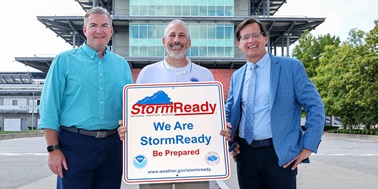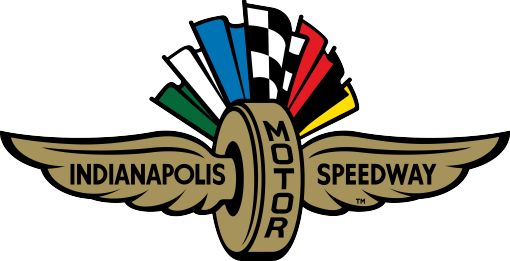High above the Indianapolis Motor Speedway, lining the windows of the eighth floor of the famous Panasonic Pagoda, a room full of men and women sit calmly overseeing the action of the Red Bull Air Race. Just like any race control room, it’s quiet and restrained, other than the occasional bark of a command into a microphone.
“Challenger 3-3, maintain hold three, ready for approach,” breaks the silence, as one airplane prepares to land after his run.
It looks like race control, but sounds like air traffic control. For this weekend’s inaugural Red Bull Air Race, it’s both.
“Race control is really the heart of the whole event,” said Jim DiMatteo, Race Director for the Red Bull Air Race. “Everything comes into race control. And it’s really good to have everybody there, so you can just turn and talk to somebody. Especially for a situation that needs an immediate mini-discussion – and most of them do; very little is black and white. Most of it’s in the gray area, and it makes it so much easier to be talking eye to eye. And that’s why we’re all together, even though we all have totally different functions.”
Red Bull divides race control into two divisions: one for event production, including everything from parking to food and beverage, TV, waste management and more; and the other for aviation, which deals with pilots, air space, ground control and the like.
In the physical space inside the Pagoda, there are two rows of Red Bull Air Race executives, race director, judges, and the TV “show-caller,” as well as group of young executives in training for race control. There is also a row of aviation officials, including those from the Federal Aviation Association, the Federal Aviation Internationale and Indianapolis International Airport. They each have one area to focus on, which comes together to make the entire event work.
“There are a lot of moving parts to this, but it works really well,” DiMatteo said. “Everywhere we go, we have to take a module and form it into what is required for that country or state, but we’re used to that. So hopefully everybody will enjoy it and we’ll be back next year.”
And next year was already forefront in DiMatteo’s mind, even before Sunday’s champion had been crowned.
“This weekend was really, really cool,” DiMatteo said. “I leave Indianapolis with an incredible positive feeling. For it to have been as well-received as it was by the fans, that’s super positive.”
In fact, it was a nearly perfect weekend from the view in race control. The only thing DiMatteo noted that he would change is the weather, which delayed qualifying a few times Saturday. But even that was negotiable.
“Only the crowd wants the better weather,” DiMatteo said. “This weekend has actually been perfect for flying.”
It has also been a perfect mix of racing and aerobatic excitement to draw a large crowd of fans, eager to see this event’s debut. It’s the kind of event that created a runway in the center of IMS for a weekend, brought more than 50,000 fans to the famed Brickyard and transformed the 2.5-mile track into an aerial spectacle.
“It’s really cool that the Indianapolis people are so race-friendly that they can appreciate us, even though we’re not motor cars,” DiMatteo said. “It is really cool when you race something like an airplane in a place that is famous for racing, but has never had anything like this before.”
But it ended the same as all Indy events: with the winner kissing the famous Yard of Bricks.
Race Control Keeps Red Bull Air Race Smooth and Successful

High above the Indianapolis Motor Speedway, lining the windows of the eighth floor of the famous Panasonic Pagoda, a room full of men and women sit calmly overseeing the action of the Red Bull Air Race. Just like any race control room, it’s quiet and restrained, other than the occasional bark of a command into a microphone.
Latest News
View All News
Fans Can Enjoy ‘Race within a Race’ at TireRack.com Battle on the Bricks at IMS
Four separate classes of cars will race simultaneously when the featured WeatherTech SportsCar Championship race starts at 11:40 a.m. ET Sunday on the 14-turn, 2.439-mile road course.

‘Plan Ahead’ for the Battle on the Bricks with IMS.com
Everything fans need to know to ensure a smooth, fun weekend at the track Sept. 19-21 during the annual IMSA sports car racing event at the Racing Capital of the World.

National Weather Service Recognizes IMS as StormReady® Partner
This distinction, awarded by the NWS, highlights organizations that have taken significant steps to prepare for and respond to severe weather, with the ultimate goal of saving lives.
